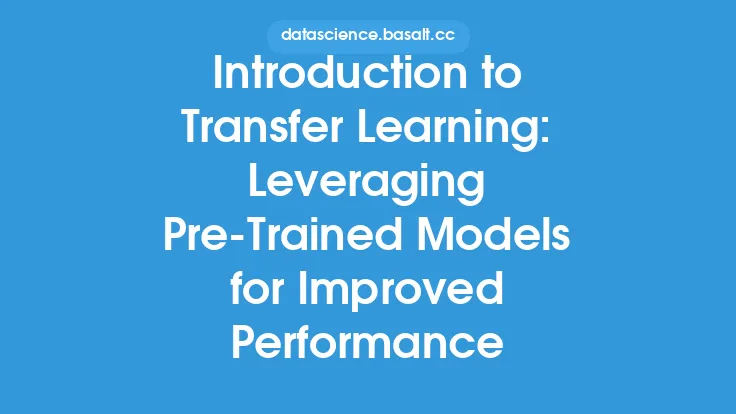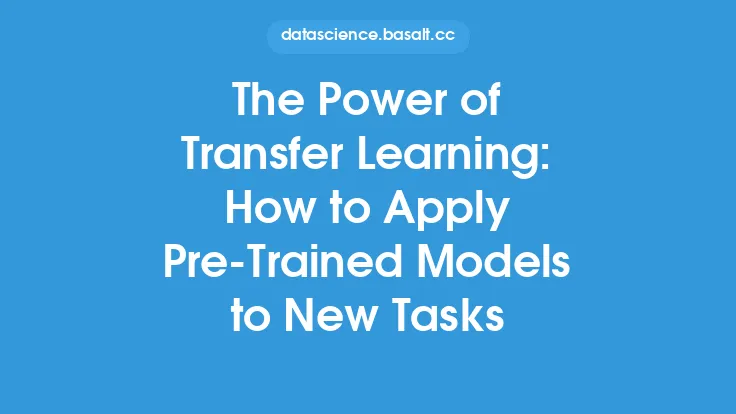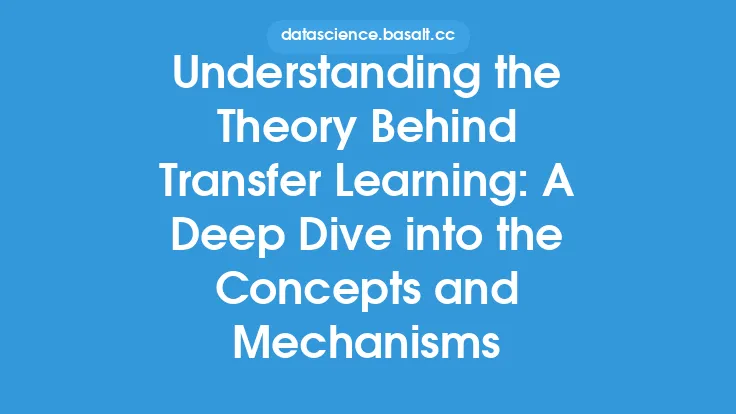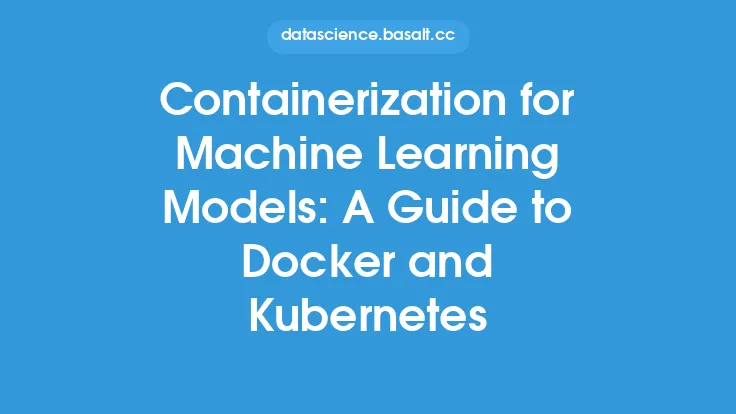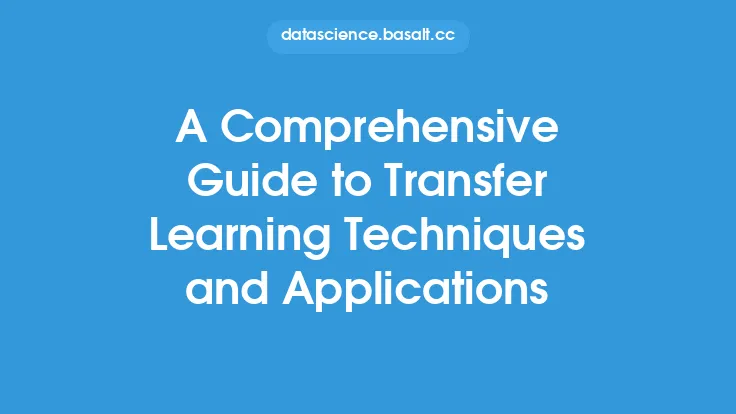Transfer learning has become a crucial aspect of machine learning, allowing developers to adapt pre-trained models to new environments and data distributions. This technique has been widely adopted in various applications, including computer vision, natural language processing, and speech recognition. In this article, we will delve into the concept of transfer learning for domain adaptation, exploring the challenges, techniques, and benefits of adapting models to new environments and data distributions.
Introduction to Domain Adaptation
Domain adaptation is a subfield of transfer learning that focuses on adapting models to new environments or data distributions. The primary goal of domain adaptation is to enable a model trained on a source domain to perform well on a target domain, which may have different characteristics, such as different data distributions, noise levels, or feature spaces. Domain adaptation is essential in real-world applications, where models are often deployed in environments that differ from the ones they were trained on.
Challenges in Domain Adaptation
Domain adaptation poses several challenges, including:
- Domain shift: The distribution of the target domain may differ significantly from the source domain, making it difficult for the model to generalize.
- Data scarcity: The target domain may have limited labeled data, making it challenging to fine-tune the model.
- Noise and outliers: The target domain may contain noise and outliers that can affect the model's performance.
To overcome these challenges, various domain adaptation techniques have been developed, including:
- Unsupervised domain adaptation: This approach involves adapting the model to the target domain without using labeled data.
- Semi-supervised domain adaptation: This approach involves using a small amount of labeled data from the target domain to adapt the model.
- Supervised domain adaptation: This approach involves using a large amount of labeled data from the target domain to adapt the model.
Techniques for Domain Adaptation
Several techniques have been developed for domain adaptation, including:
- Feature alignment: This approach involves aligning the features of the source and target domains to reduce the domain shift.
- Instance weighting: This approach involves assigning weights to the instances in the source domain to reduce the effect of noise and outliers.
- Adversarial training: This approach involves training the model to be robust to the domain shift by using an adversarial loss function.
- Domain-invariant feature learning: This approach involves learning features that are invariant to the domain shift.
Deep Domain Adaptation
Deep learning has revolutionized the field of domain adaptation, enabling the development of more effective and efficient domain adaptation techniques. Deep domain adaptation techniques include:
- Deep domain confusion: This approach involves using a deep neural network to learn domain-invariant features.
- Correlation alignment: This approach involves aligning the correlations between the source and target domains to reduce the domain shift.
- Multi-task learning: This approach involves training the model on multiple tasks simultaneously to improve its ability to generalize.
Applications of Domain Adaptation
Domain adaptation has numerous applications in real-world scenarios, including:
- Computer vision: Domain adaptation is essential in computer vision applications, such as object recognition, segmentation, and detection.
- Natural language processing: Domain adaptation is crucial in natural language processing applications, such as sentiment analysis, text classification, and machine translation.
- Speech recognition: Domain adaptation is vital in speech recognition applications, where the model needs to adapt to different accents, noise levels, and speaking styles.
Benefits of Domain Adaptation
Domain adaptation offers several benefits, including:
- Improved performance: Domain adaptation can significantly improve the performance of the model on the target domain.
- Reduced training time: Domain adaptation can reduce the training time by leveraging the knowledge learned from the source domain.
- Increased robustness: Domain adaptation can increase the robustness of the model to noise, outliers, and domain shift.
Conclusion
Transfer learning for domain adaptation is a powerful technique that enables models to adapt to new environments and data distributions. By understanding the challenges and techniques of domain adaptation, developers can develop more effective and efficient models that can generalize well to new domains. As the field of machine learning continues to evolve, domain adaptation will play an increasingly important role in enabling models to perform well in real-world applications.
